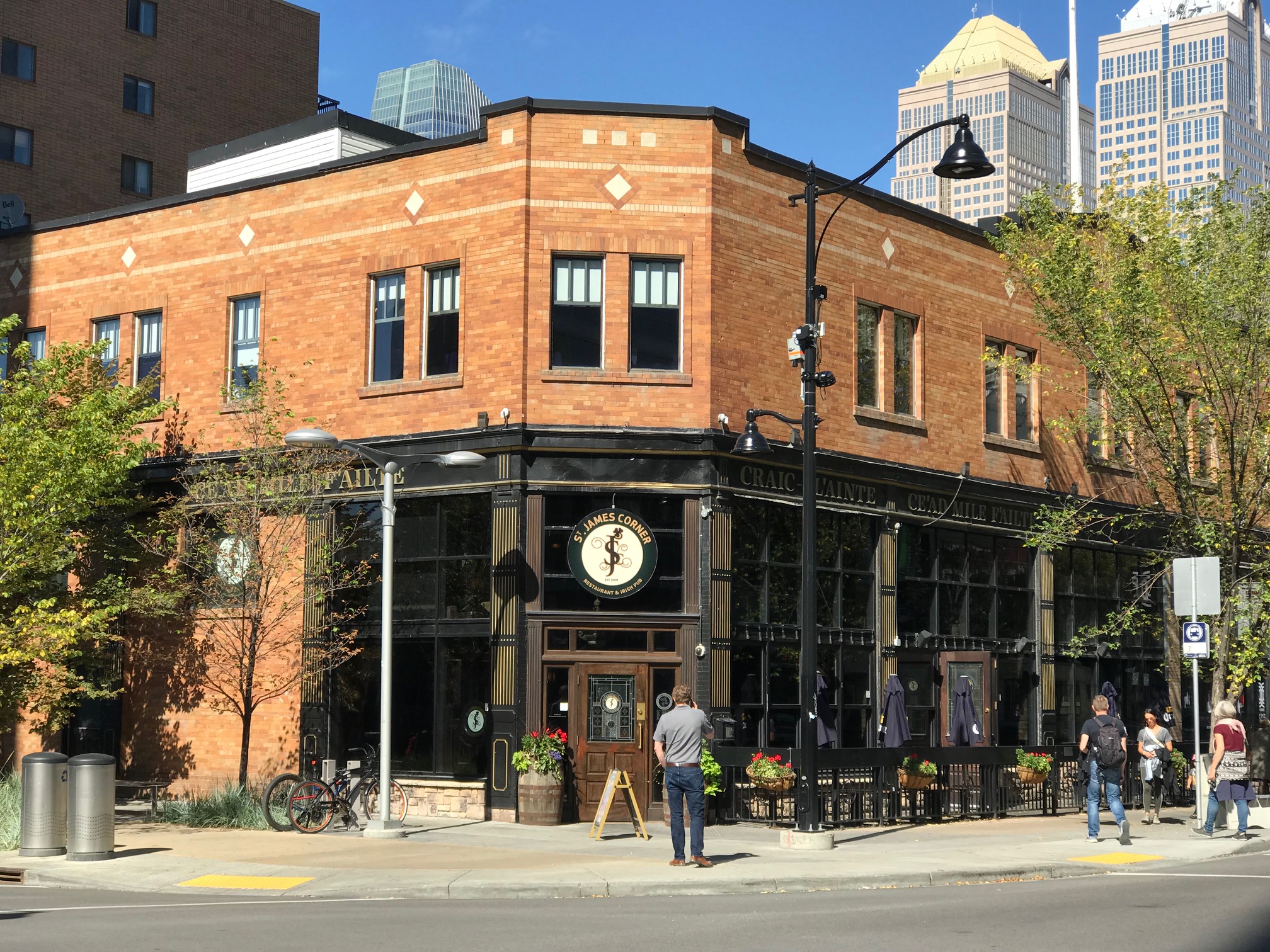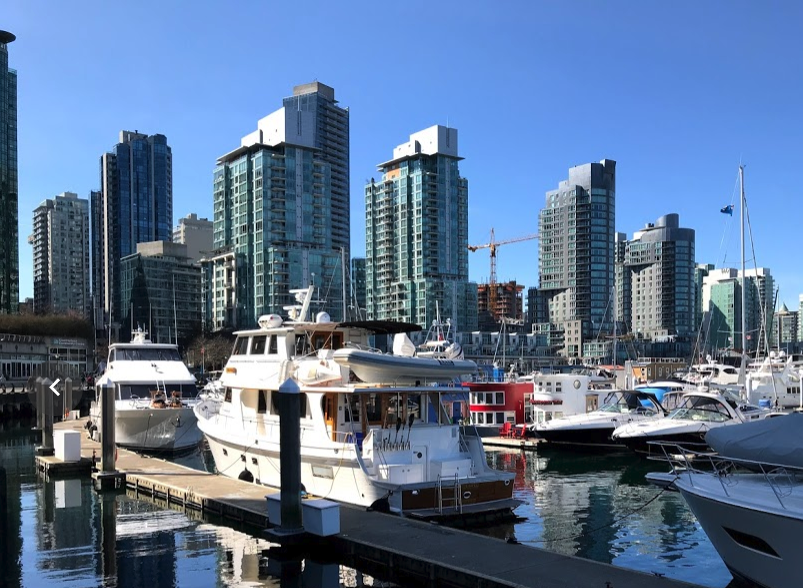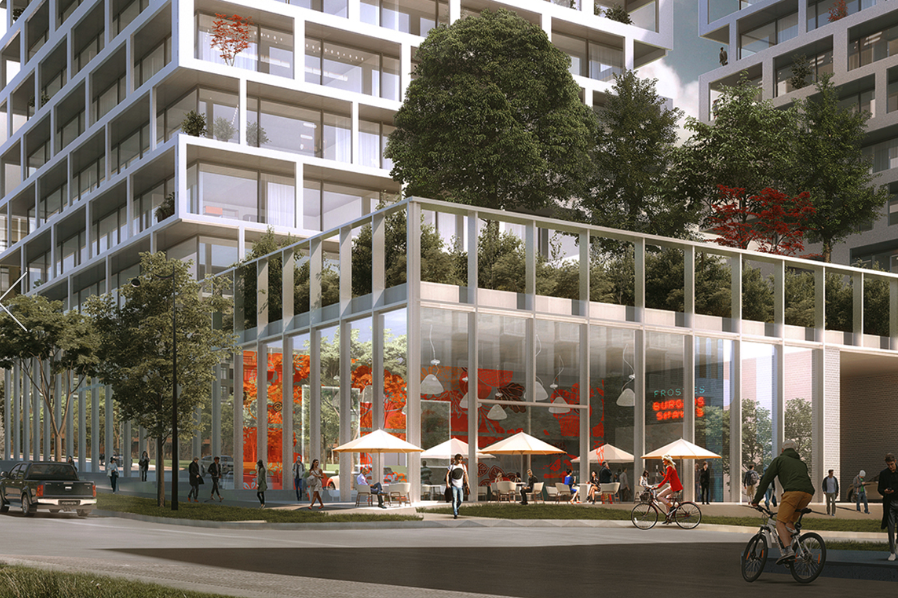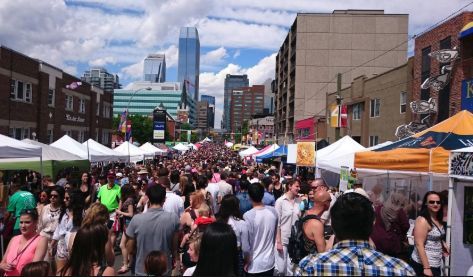Calgary vs Vancouver: Affordability & Livability
Update 2021: In the past two decades, home prices have increased 375% nationwide and in hot markets like Toronto and Vancouver, as much respectively as 450 to 490%. Today, the average price of a home is over $730,650 in Canada's housing market according to Canadian real estate association. An average condo in Vancouver now costs $750,000 as of December 2021.
After recently spending a month living in the middle of Vancouver’s City Centre (March 2019), exploring its different communities and checking out its condo market, I kept asking myself – how can millennials afford to live there?
And, for that matter how can empty nesters retire there?
Calgary’s has numerous chill spots like Cold Garden a craft brewery in Inglewood that makes its City Centre a very attractive place to live, work and play.
Dude Chilling Park is just one of many parks and public spaces that makes Vancouver’s City Centre one of the best places in North America for urban living.
Affordability
The cost of a used condo in Vancouver is about $1,000/square foot. Translated, this means a modest 750 square foot condo is going to cost you $750,000. If you want a new 1,300 square foot condo be prepared to pay $2,000/square foot or $2,600,000. That is more than twice the cost of a similar condo in Calgary.
While you expect to pay a premium to live in downtown Vancouver because of its climate and amenities like Stanley Park, beaches and sea wall, that’s still a pretty stiff price to pay.
I came away feeling Calgary’s City Centre communities while not on par with Vancouver’s in the way of amenities are not that far behind in their evolution as urban villages and all of them have significant upside potential.
In chatting with several people in Vancouver and Calgary over the past few months I have often heard Calgary’s City Centre being called a “hidden gem” when it comes to urban living with potential to get even better.
Let’s compare Calgary’s urban communities with Vancouver’s.
Food trucks help to animate public spaces throughout Vancouver’s City Centre.
Calgary’s City Centre has an amazing patio scene.
Calgary also has a great pedestrian mall that is part of a National Historic District.
The stairs in front of the Vancouver Art Gallery is a popular place to chill and catch some sun.
Calgary also has some pretty cool places to sit.
Vancouver’s City Centre has numerous high streets offering upscale and fun places to shop.
Calgary has its fair share of quirky places to shop, including NERD a shop in Inglewood that specializes in fashion and accessories for roller skating.
Vancouver’s City Centre has dozens of funky residential developments.
It doesn’t get much cooler than the front entrance to Pixel condo in Calgary’s Kensington Village.
Unless it might be the Colours condo in Calgary’s hipster Beltline community.
Vancouver has is fair share of fun strange red sculptures.
Calgary Peace Bridge is one of North America’s signature pedestrian bridges.
Vancouver Art Gallery has funky exhibitions.
Calgary’s Glenbow Museum has fun exhibitions also.
Calgary’s City Centre has tons of things to see and do.
Vancouver House is that city’s newest weird and wacky architecture.
Calgary has its fair share of weird and wacky architecture and public art.
Beltline vs West End
In many ways, Calgary’s Beltline is the equivalent of Vancouver’s West End, with its tree-lined streets populated by a mix of old single family homes, scattered amongst small mid-century apartments and new mega highrise towers. The Beltline’s 17thAve is akin to Robson Street but with less shopping and more patios. Tenth and 11th Aves are the equivalent to Davie St and Beltline’s 1st, 4th, 8th, 11th and 14th Street pedestrian corridors are Vancouver’s Denman St. The Beltline’s Lougheed House and Beaulieu Gardens is much nicer than the West End’s Roedde House Museum and grounds.
Calgary’s Memorial Park is very similar to the West End’s Nelson Park in scale but Memorial Park is home to a historic library that includes a very cool musical instrument lending program. But the Beltline can’t match the West End’s amazing Mole Hill community housing block that includes the preservation of several century homes and a quaint garden pathway. Both communities are home to their city’s respective LGBTQ communities.
Where Vancouver’s West End really shines is in its easy access to parks and pathways along English Bay and Stanley Park. While Calgary’s Beltliners are land locked with no direct access to a major park or the Bow and Elbow Rivers.
It is hard to beat Vancouver’s English Bay as an urban playground.
Vancouver’s West End streets not only have lovely tree canopies, but also enchanting front yards that gives it a very residential sense of place.
Vancouver’s West End is a mix of modern and traditional architecture.
Calgary’s Beltline also funky modern architecture like Mark on 10th, which also has a roof top with hot tub, BBQ, kitchen and lounge for residents to mix and mingle. And yes we have food truck too.
Calgary’s 17th Avenue is lined with sidewalk patios that make for great people watching.
17th Avenue also has a diverse independent cafe culture.
Jim Deva Plaza is a fun place for people of all ages to hang out along Davie Street.
The Beltline’s equivalent would be Tomkins Park.
Vancouver’s West End has funky bike racks.
Calgary’s Beltline also has funky bike racks.
The Beltine has several pedestrian oriented main streets with pubs, patios, shops and restaurants.
While the Beltline may not have as many grocery stores at the West End it has two major grocery stores as well as several specialty grocers like Community Natural Foods.
East Village vs Yaletown
East Village and the proposed new alliance with Victoria Park and Stampede Park could well become Calgary’s equivalent to Vancouver’s Yaletown. Give it time. Yaletown had a head start, its transformation into a funky place to live began in the early ‘90s. East Village’s mega makeover started about 15 years later.
The master plans are surprisingly similar, build highrise residential development next to an iconic new library, along with some major sports and entertainment facilities and a multi-use pathway along the water and people will want to live there.
Vancouver’s signature central library in Yaletown.
Calgary’s signature new central library in East Village
The ARC a new residential building in Yaletown has fun hole in the middle.
Calgary’s National Music Centre is the gateway between East Village and Victoria/Stampede Park.
Calgary’s East Village has nothing to match Granville Street with its mix of bars, clubs, shops, hotels and offices.
Yaletown’s pedestrian pathway is lined with residential buildings.
Calgary’s RiverWalk in East Village is a popular chill place.
There are several parks located along Yaletown’s pathway.
East Village Plaza is a poplar meeting place and the gateway to St. Patrick Island.
St. Patrick’s Island’s pebble beach is located next to East Village.
East Village’s skyline is changing rapidly with new residential towers being added every year..
East Village’s Fort Calgary is a popular outdoor concert venue in the summer.
Eau Claire / Downtown West vs Coal Harbour
Eau Claire and Downtown West combined are Calgary’s equivalent to Coal Harbour with their modern high-rise residential towers lined up along the water’s edge. In this case, the master plans differ. Coal Harbour is home to Vancouver’s mega convention centre and cruise ship terminal making it a tourist hub, whereas Calgary’s Eau Claire/Downtown West is more focused on recreational amenities for residents including the Bow River pathway, Prince’s Island Park, Shaw Millennium Park and Eau Claire Y.
Eau Claire and Downtown West have tremendous potential, especially if you add in West Village which could become a funky innovation campus for start-ups businesses, perhaps even the next Amazon, Google or Apple if we play our cards right.
Vancouver’s Coal Harbour is a boater’s paradise.
Calgary’s Eau Claire shoreline.
Calgary’s Downtown West shoreline.
Coal Harbour’s waterfront pathway
The new West Eau Claire Park pebble beach is the perfect sunset watching spot with the Peace Bridge on the horizon.
River surfing on the Bow River is popular at the Louise Bridge in Eau Claire
Calgary’s old science centre planetarium in West Downtown is currently being converted into a public art gallery.
Calgary’s West Village has huge potential to become a vibrant urban village on the Bow River.
Shaw Millennium Park, combined with the new civic art gallery will become the heart of vibrant urban community in the near future. Photo credit: Canadian Society of Landscape Architects
Across the Water
Hillhurst, Sunnyside, Bridgeland and Crescent Heights being across water from downtown have many parallels to Vancouver’s Kitsilano and False Creek. “No way” you say!
From an urban living perspective Calgary’s northsiders have two islands playgrounds. St. Patrick’s Island (which officially belongs to Bridgeland Riverside, not East Village) and St. George’s Island aka Calgary Zoo offer locals an urban playground for families that is hard to beat.
Granville Island is the urban playground for those living in Kits and False Creek, however, Granville Island is more a tourist attraction than an amenity for residents. You can find fresh food at better prices in lots of places and without the crowds, than Granville’s Farmers’ Market. While Kitsilano’s 4th Street and West Broadway are its two pedestrian streets, Calgary’s north shore communities have 10th St and Kensington Road as their traditional main streets, with budding new main streets along Edmonton Trail, Centre Street and 8th Street.
While Calgary’s north shore communities don’t have the beaches of Kitsilano, they do have some lovely parks with stunning view of the mountains and the downtown skyline.
Calgary can’t match the Kitsilano beach.
Calgarians like to dress up when then go fishing on the weekend.
Kitsilano’s Main Street is lined with shops, cafes and restaurants.
Kits is home to both a Whole Foods Market and Safeway grocery store.
Kits is home to numerous great restaurants. We had a great lunch at Jam Cafe, where there is almost always a line-up.
Kitsilano has several fun murals.
Vancouver’s City Centre is also home to Granville Island with its Public Market.
Vancouver’s False Creek residents enjoy easy access to the waterfront and Granville Island.
Calgary’s Crescent Height stairs not only offer a great workout but spectacular views of downtown and the Rocky Mountains..
Tobogganing is popular with families in Bridgeland.
In Calgary’s City Centre there are street festivals pretty much ever weekend from May to September like this one outside Bridgland’s iconic Lukes Drug Mart a funky cafe, record store, grocery store, drugstore and post office.
Bridgeland/Riverside has a tool lending library - how cool is that?
Coming soon to Bridgeland is the mixed-use Dominon project which will include a co-work space, as well as retail and restaurant.
Calgary’s Kensington Village has two Main Street - 10th St and Kensington Road.
Kensington Village is home to the iconic Plaza theatre.
Kensington Village has numerous great restaurants with sidewalk summer patios.
Kensington also has the fun Container Bar.
The Bow to Bluff along the LRT tracks in Sunnyside is now fully funded and will create a fun urban gathering space for all ages.
Funky new condos are popping up everywhere in and around Kensington Village.
Mission vs South Granville
Mission/Erlton and 4th St SW is Calgary’s equivalent to Vancouver’s South Granville. Both have a main street with upscale shops, galleries and restaurants, mixed in with some mid-rise residential development.
Mission/Erlton residents have the added bonus of the Elbow River in their backyard and easy access to Stampede Park and Repsol Sports Centre.
South Granville has more in the way of shops and galleries, as well as the historic Stanley Theatre for its residents to enjoy.
Link: Mission is marvellous
The Stanley Theatre anchors South Granville street.
South Granville has numerous mid-century apartments.
The side street next to South Granville have lots of smaller apartments, very similar to those found in Calgary’s Mission and Cliff Bungalow.
Meinhardt has been been a Western Canadian culinary destination since it opened in 1996.
Calgary’s summer festival season kicks off each year with the Lilac Festival along 4th Street in Mission.
River rafting along the Elbow River through Mission is popular in the summer.
Mission’s 4th Street is lined with restaurants, cafes, galleries and shops.
Historic Districts
Inglewood / Ramsay with its historic main street has many of the attributes of Vancouver’s Gastown, without the hordes of tourist, that make living there a nightmare in the summer. The 2010 completion of the historic Woodward department store site redevelopment was the catalyst for Gastown’s revitalization. It includes a mix of uses from affordable and market housing to SFU School for Contemporary Arts, from the National Film Board office to a grocery and drug store.
Inglewood’s revitalization was the result of Main Street Program in the ‘90s that focused on the façade restoration of the historic buildings along 9thAvenue to create a mixed-use pedestrian street. More recently new commercial buildings like the Atlantic Avenue Arts Block and West Canadian Digital Imaging building become workplace anchors for its main street.
As well, several recent condo developments, co-work spaces and numerous craft breweries have made Inglewood/Ramsay a very attractive place to live, work and play.
Inglewood’s Calgary Brewery site and Ramsay’s Dominion Bridge site and the coming Green Line all have the potential to make Inglewood/Ramsay a model for 21stcentury urban living.
While Calgary’s Chinatown is much smaller than Vancouver’s, it benefits from not having the spillover of undesirable activities from East Hastings.
Vancouver’s Gastown is very popular with tourists.
Gastown is becoming increasingly popular as a place to live with the redevelopment of the old Woodwards department store.
Inglewood is home to Canada’s Knifewear’s flagship store as well as numerous other independent shops, restaurants, pubs and shops.
Inglewood is home to Recordland one of Canada’s biggest and best used record stores.
Inglewood is home to Calgary’s live music scene.
Inglewood’s Harvie Passage is fun for hikers, kayakers and bikers.
Gotta love public art that you can climb on like this one at Inglewood’s Harvie Passage
In My Opinion
As a place to live, Calgary’s City Centre offers as much to its residents in the way of festivals, entertainment, culture, restaurants, bars, shops, parks and pathways as does Vancouver’s.
In a recent interview with BNN Bloomberg, Sam Kolias, CEO of Boardwalk REIT, a company that owns and operates rental properties throughout Canada but has a larger concentration of their rentals in Alberta, stated that the most affordable rental rates in the country can be found in Alberta. In addition to this, Kolias highlighted that "statistically and scientifically, Southern Alberta is the sunniest region in Canada". This is in stark contrast with Vancouver, which has some of the highest precipitation numbers in Canada.What Calgary is missing are the amazing array of urban grocery stores - big and small - that Vancouver offers. However, this is gradually being addressed with the opening of Urban Fare in the Beltline this year and City Market in East Village next year.
What really makes Calgary’s City Center MOST attractive as a place to live is its affordability not only compared to Vancouver, but most major cities in North America.
Now is the perfect time for Calgary to attract more young techies from across North America (who can live anywhere) to establish their live/work lifestyles and grow their businesses here.
What is needed is a clever marketing campaign that captures the imagination of young entrepreneurs re: why Calgary is perhaps the most affordable and livable urban playground in North America.
If you like this blog you will find these blogs interesting:
Calgary’s Beltline Neighbourhood vs Vancouver’s West End




















































































